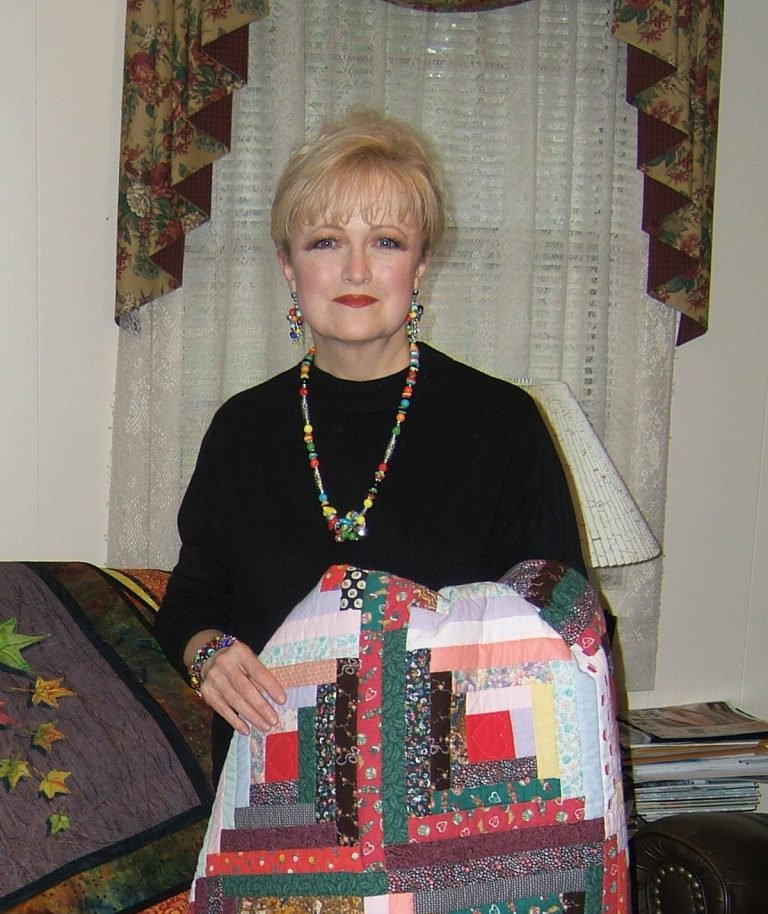Prize-winning quilter Judy Spiers was born and raised in Marion County and lives there now, on the western edge of Foxworth. Her family tree is packed with musicians and artists, many of them painters. She also has a great-great-great-great-great grandmother whose quilt is in a museum in Jackson. Most of these ancestors were farmers, though her parents worked in a manufacturing plant in Columbia.
While growing up, Spiers spent many summers at her grandmother’s farm, where she learned to sew by making doll clothes from her grandmother’s fabric scraps. The summers on the farm also helped her to develop a love for nature, which is evident in the subject matter of many of her quilts. She has worked in retail sales, been a substitute teacher, and has owned a ceramics shop and a comic book store.
Spiers began quilting in 1996 and was self-taught for the first few years. Although her grandmothers had quilted, they were all gone before she started. They had given her some utilitarian quilts. Using them as models, as well as quilt instruction books and her memories of the quilting of her grandmothers, she made her way. Initially, she decided to stick with the same traditional patterns they had used but found that she enjoyed trying new things, too.
Her craftsmanship was uncompromising from the start—she cites various errors in her first quilt, but these are perceptible only to the well-trained eye. She joined the state quilter’s guild, in 2000, and was soon teaching workshops for the organization. Spiers loves both traditional and innovative patterns and techniques. For instance, one of the workshops she focuses on how to create shadows with a bleach discharge technique. She has had particular success with miniatures, quilts often less than two feet square that nevertheless include hundreds of separate pieces.
Spiers is very active in The Pine Belt Quilters, the Hattiesburg-based quilter’s guild that is currently the largest local quilting group in the state (with about 130 members). Each month the group has one general meeting, one at which they work on quilts to be sold for the benefit of children in need, one at which they make items to sell at shows, and one featuring a workshop on some specific technical theme. Women from different income levels and age groups join the group for fellowship and to learn new quilting techniques.
Some of Spiers’ quilts lie on beds and many hang on walls. Even some of the largest have ended up that way. Her quilt “Mississippi Backroad Treasures”, which measures 91 inches square, is such a piece. Like many of her quilts, it has won numerous prizes. The techniques used to make it include traditional quilting, hand-applique, inking, and bleach discharge. In it, she tried to portray the general feel of Red Bluff, a noted natural site in Marion County. All of the flowers, birds, and butterflies featured on the quilt are found in Mississippi.
Spiers also puts a part of herself in every quilt. Some are made from scraps of her clothes, her children’s play clothes from long ago, and even some scraps from her grandmother. The quilts in part represent her and her family. She says that “when you give one away, it’s like giving away a piece of yourself.”
– Chris Goertzen

